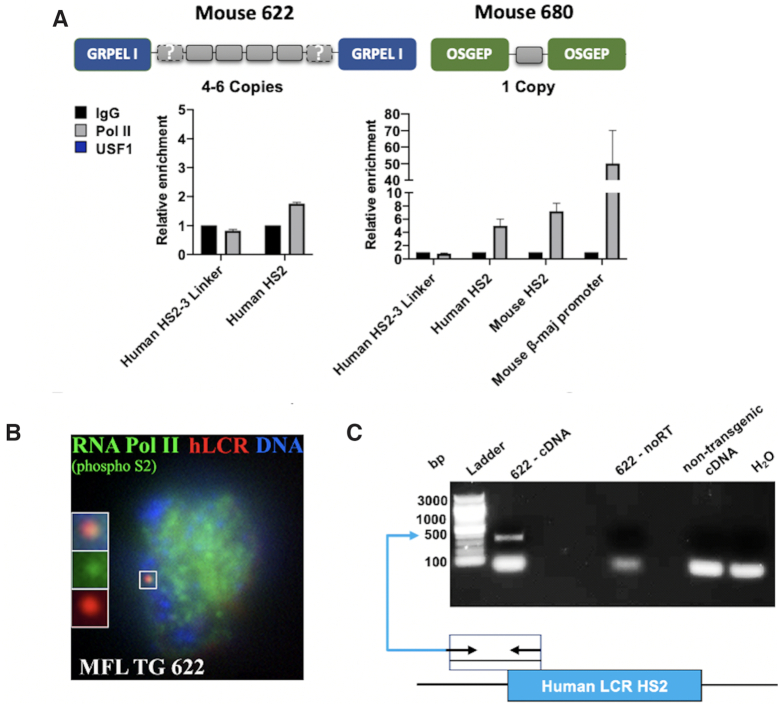Figure 1.
Recruitment of Pol II to human LCR HS2 in transgenic mice. (A) Two transgenic mouse lines were generated in which the human LCR integrated with four to six copies or one copy into introns of the GRPEL1 (line 622) or OSGEP (line 680) genes, respectively. Fetal liver (12.5 dpc) was isolated from the transgenic mice and subjected to ChIP followed by qPCR using antibodies specific for Pol II and control IgG, and primers specific for mouse or human HS2, for a region in between human HS2 and HS3 (HS2-3 Linker), or for the mouse β-maj-globin promoter. Error bars reflect SEM from three independent experiments. (B) Association of the transgenic human LCR with Pol II foci in mouse fetal liver cells (12.5 dpc). Fetal liver cells were isolated from transgenic line 622 and subjected to immunofluorescence using antibodies specific for Pol II-S2P (green) and a fluorescently labeled probe specific for the transgenic human LCR (red; DNA in blue). The magnified insert shows association between the transgenic LCR and Pol II-S2P (five out of six nuclei showed association of the transgenic LCR with transcription foci). (C) Analysis of HS2 5′eRNA. RNA was isolated from fetal liver of transgenic line 622 (12.5 dpc) and subjected to PCR analysis with or without reverse transcriptase (noRT). Results from analyzing DNA from wild-type, non-transgenic mice, and from a negative H2O control are also shown. The diagram at the bottom shows the location of primers used for the RT-PCR analysis.

